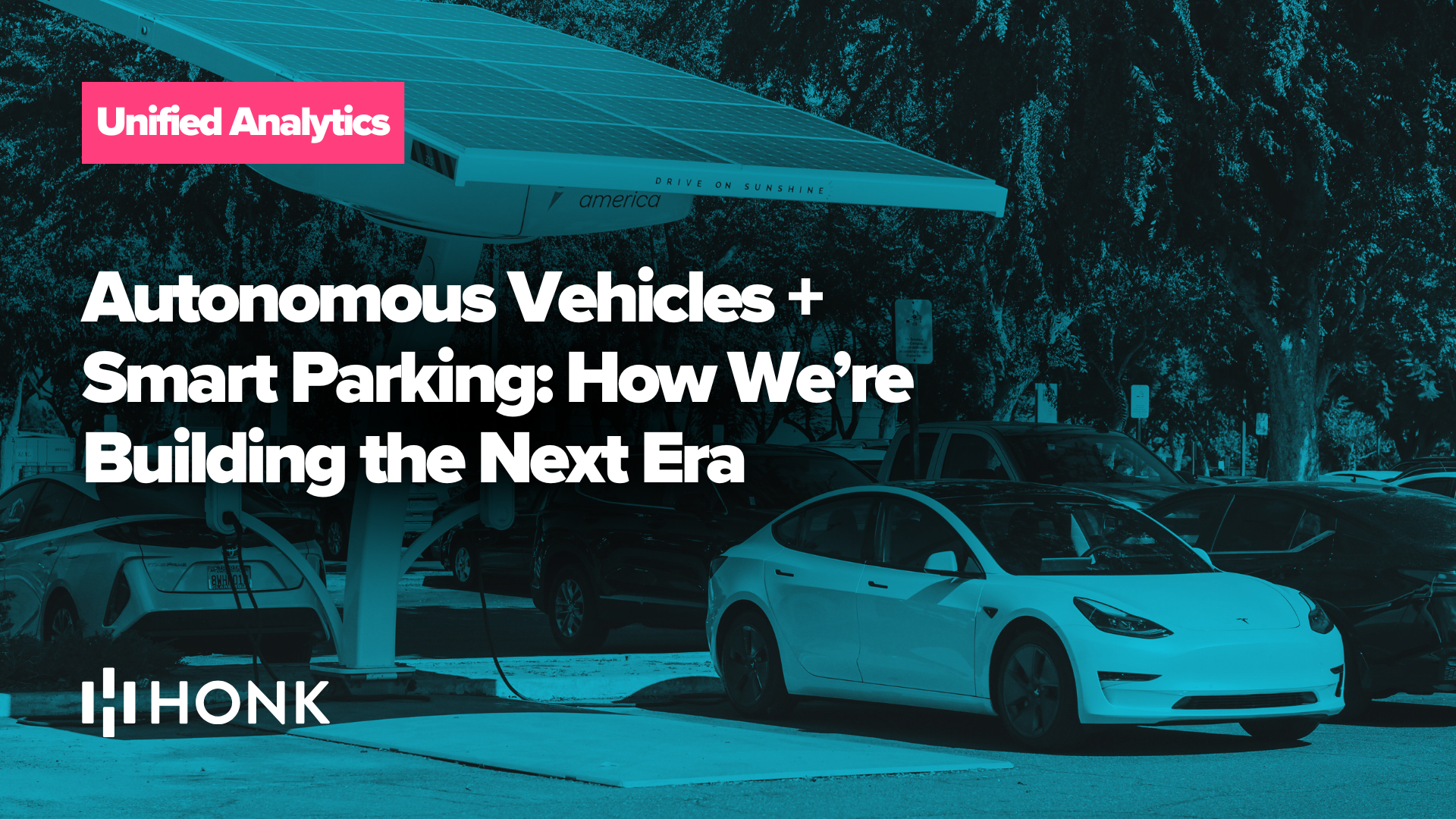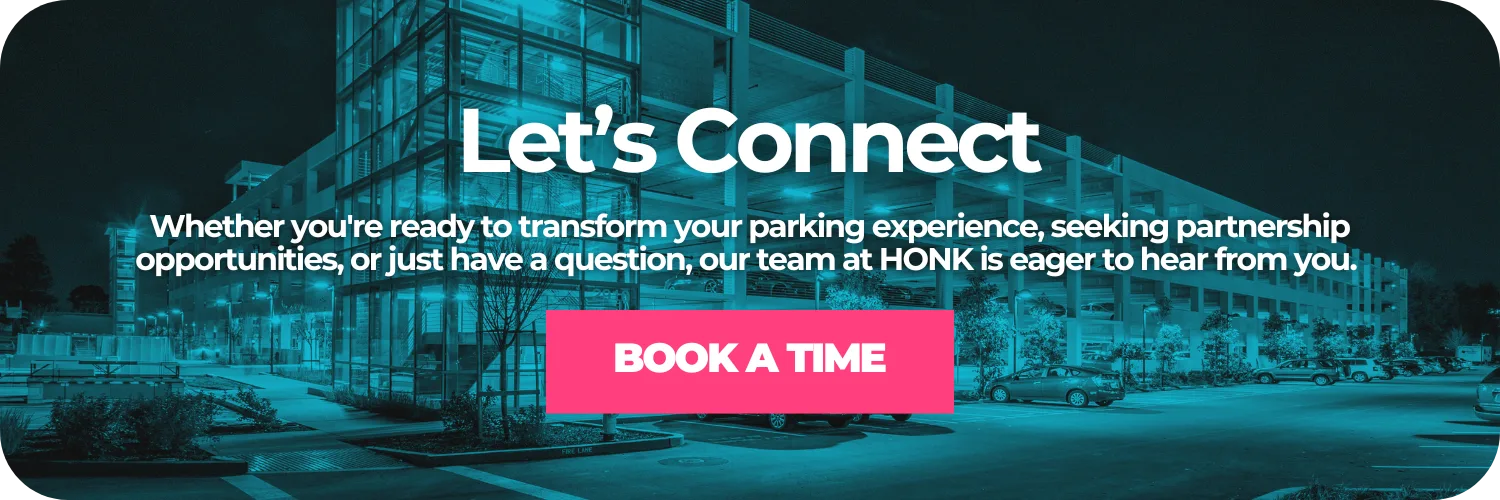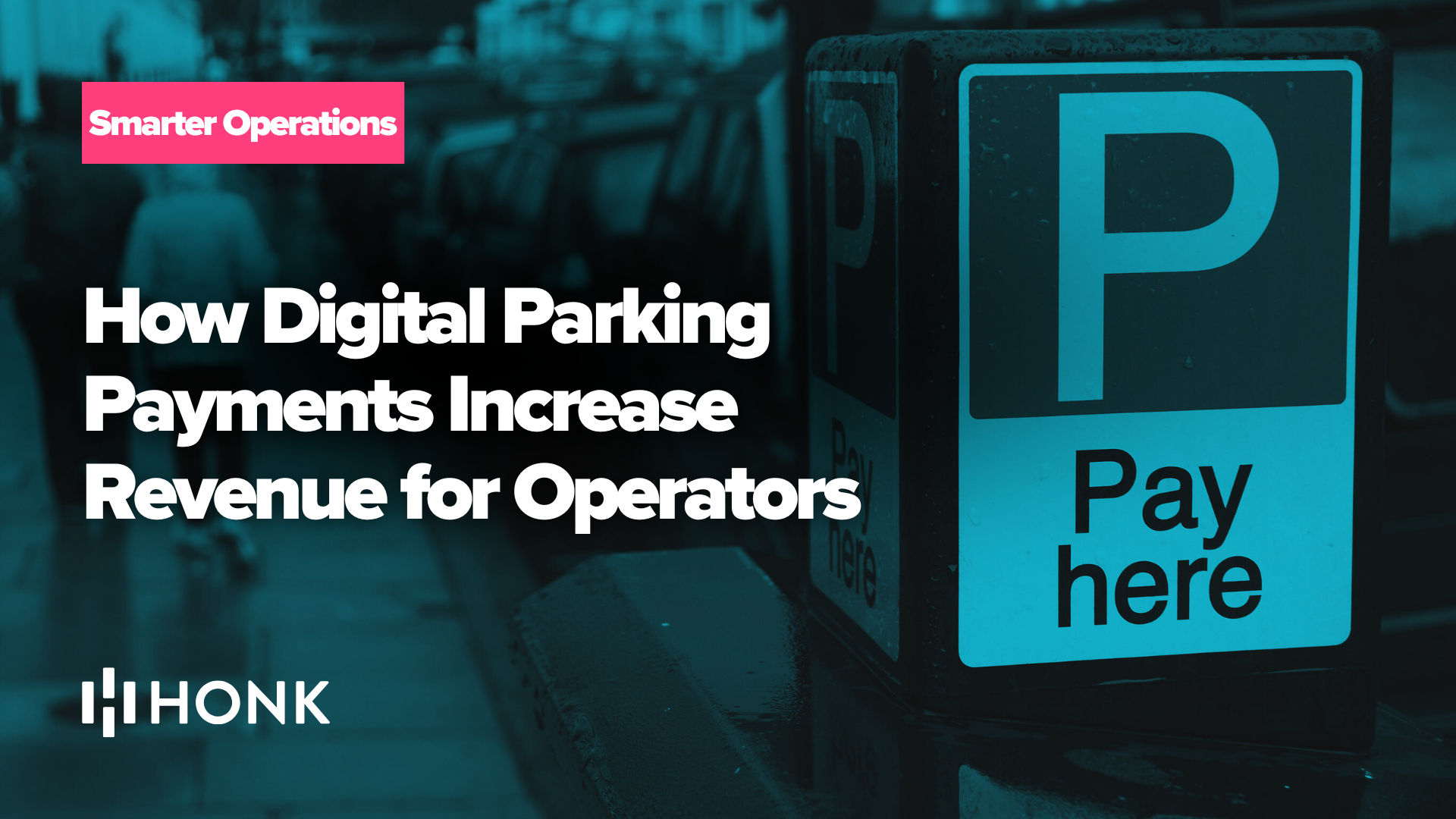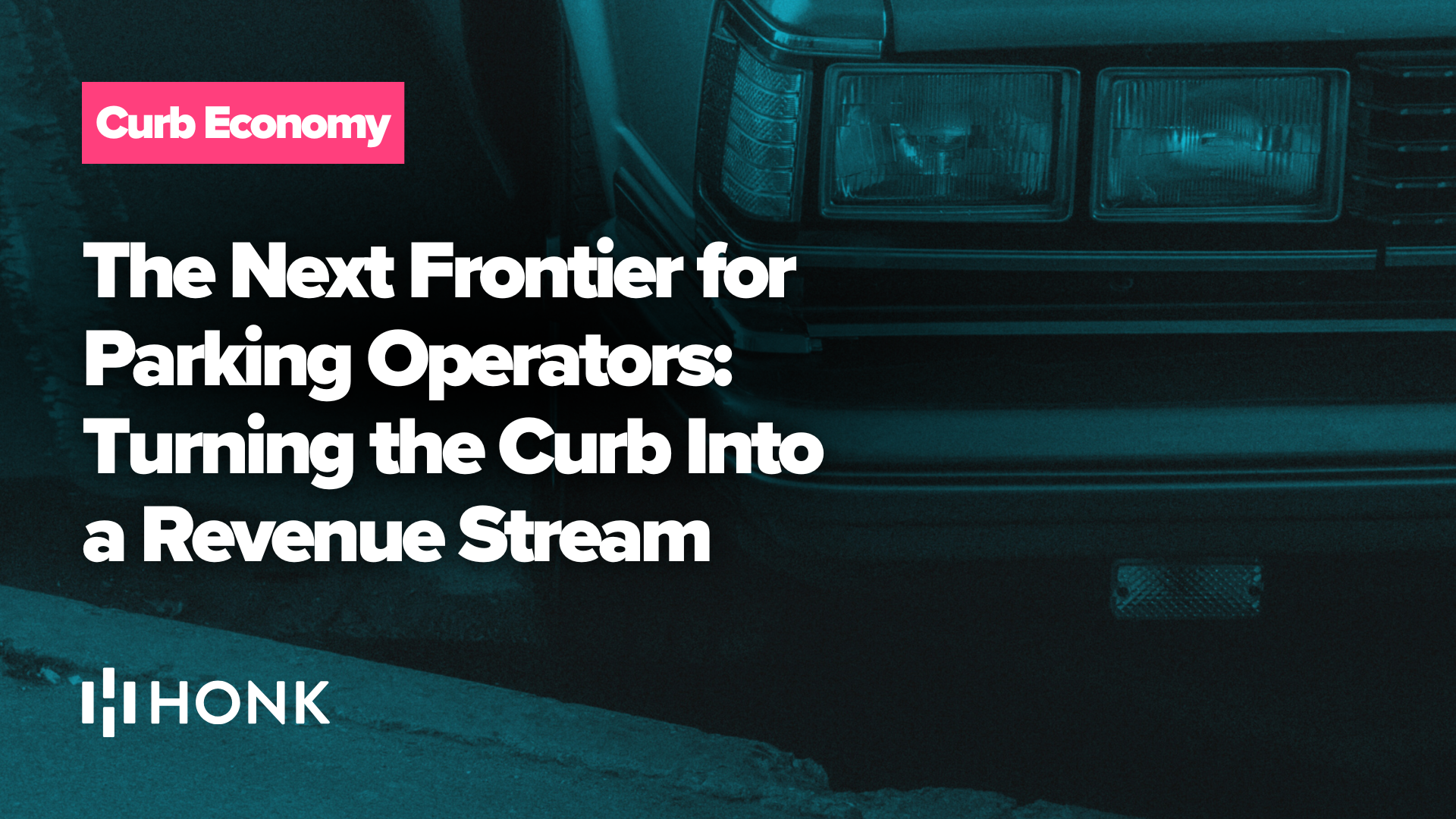Autonomous vehicles are moving from pilot to presence, and parking is where the rubber meets the curb. At HONK, we’ve spent the last decade digitizing the most important parts of parking—payments, permits, enforcement, analytics, and operator workflows—precisely so the industry is ready for what’s next. AVs don’t carry wallets, fumble with meters, or line up at pay stations. They need instant, API-driven, license-plate-based access to spaces, staging areas, and curbside zones. This is exactly the world our software was built to serve. For parking operators, municipalities, campuses, and private venues, the question isn’t “if” AVs will reshape demand patterns and access rules; it’s “how fast.” We’re ready—and we’re already helping operators evolve toward an autonomous, data-driven, and app-optional future with contactless payments, digital permits, LPR-enabled enforcement, dynamic pricing, and real-time analytics that tie it all together, as we outline in The Future of Parking: Contactless Technology.
Why AVs Change the Parking Playbook
Autonomy rewrites the interaction model. Instead of a driver reading signage and walking to a meter, the “driver” is a software stack. Every step—discoverability, reservation, entry/exit, compliance, and payment—must be machine-readable. That means plate-based identity, a digital permit or session, a reservation ID when needed, real-time validation at entry, and automated reconciliation on exit. We’ve been steadily removing friction from these steps for human drivers through mobile-first, app-optional flows like QR and text-to-pay, because speed matters whether there’s a person behind the wheel or a neural network; our perspective on this shift is captured in The Contactless Parking Revolution and the way we designed Guest Checkout with QR and Text-to-Pay.
AVs also elevate the importance of pre-booking, inventory control, and pricing agility. When fleets can secure spaces and curb windows in advance, operators improve yield and keep curbside traffic moving. Our platform’s analytics, dynamic pricing, and reservation capabilities make those adjustments real-time and rules-driven rather than manual and guess-based, which we detail in Parking Analytics: Turning Data into Actionable Operational Insights.
The Three Pillars of AV-Ready Parking
1) Frictionless, App-Optional Payments and Sessions
HONK supports multiple entry points: use the HONK app, scan a QR code, or text to initiate a session—no download required. For AVs, that flexibility becomes an integration path: a fleet system or in-vehicle interface can call the same mobile web flows to start, extend, or end a session. This multi-channel approach drives compliance, reduces lines at kiosks, and keeps interactions digital end-to-end. We discuss the benefits and design choices behind this “no kiosk required” approach in Beyond the Pay Station and why One Size Doesn’t Fit All: Multi-Channel Payments matters for adoption.
2) License Plate Recognition + Digital Permits for Hands-Free Access
Because every HONK session or permit is tied to a plate, LPR can verify authorization on approach. That enables virtual gates, automated entry, and selective enforcement that targets only vehicles without valid sessions. We’ve showcased how LPR pairs with real-time data to reduce disputes and improve throughput across venues from stadiums to city lots in The Role of Real-Time Data in Smarter Parking Management and highlighted game-day impacts in Solving Parking Challenges at Sports Complexes with HONK’s Flexible Solutions.
3) Unified Analytics and Dynamic Pricing
Digitization only delivers impact when data is joined up. Our analytics show live occupancy, demand spikes, session patterns, and revenue flows so you can rebalance supply, open overflow zones, or flex rates. For AV fleets, those signals can be shared via policy: reserve blocks for autonomous pickups, open value tiers overnight, or create premium lanes on event nights. You can see how we turn insights into action in Parking Analytics: Turning Data into Actionable Operational Insights.
An Integration Blueprint for Autonomous Operations
Discovery and Booking
AV fleets need deterministic availability. With HONK, operators can publish reservable inventory windows by asset, level, or zone. We support advance booking and rule-based pricing so fleet dispatchers can secure parking and staging capacity near destinations and the time windows that matter most; we unpack the real-estate and customer-experience benefits in Parking Reservation Systems: Elevating Real Estate Utility.
Arrival and Entry
On approach, LPR recognizes the plate, verifies an active session or a valid permit, and signals a virtual or physical gate to open. No tickets, no kiosks, no friction. If a session doesn’t exist, the fleet backend or in-car interface can resolve it instantaneously via our app-optional flows, the same way a human driver would scan a sign to pay—see The Role of Real-Time Data in Smarter Parking Management alongside The Contactless Parking Revolution.
Charging + Parking as One Checkout
As EV adoption rises within autonomous fleets, bundling energy and space into a single transaction improves the software-driven experience and creates new revenue levers for operators. Our approach integrates parking and EV charging payments so fleets don’t juggle two systems for one stop; we explain how and why in Adapting to the EV Boom: Integrating Parking and EV Charging Payments.
Stay Management, Extensions, and Exit
Stays change. Extensions should be instant. Whether a vehicle is human-driven or autonomous, HONK sessions can extend on the fly and reconcile automatically on exit. That reduces overstay disputes and smooths the curb when a pickup ETA shifts by a few minutes. Our focus on queue reduction and simplicity is outlined in How Mobile Parking Reduces Wait Times and Frustration.
What AV-Ready Means for Different Operators
Municipalities and Smart-City Leaders
Cities want less circling, safer curbs, and channels to move people—not just cars. With HONK, agencies can designate and price AV pickup/drop-off windows, reduce congestion with dynamic rates, and feed usage data into broader mobility planning. We explore the macro view in Parking’s Role in the Smart-City Ecosystem and how our Municipal Parking Management Software supports those policies on the ground.
Stadiums, Arenas, and Event Venues
Game day demand is spiky and time-bounded. AVs intensify the need for pre-booking, time-sliced access, and curbside choreography. Our event-night playbook leans on advance reservations, variable time bands, and LPR for throughput, which reduces conga lines at gates and helps security teams focus on true exceptions—details we cover in Solving Parking Challenges at Sports Complexes.
Hospitals and Campuses
Healthcare and higher-ed need predictable permits for staff, flexible guest access, and minimal friction for drop-offs. Layer AV staging windows and route-based permits onto that foundation and you keep arrivals calm, entrances clear, and patient/visitor experiences smooth. Our multi-channel payment flows reduce kiosk bottlenecks and are simple to navigate for first-time visitors; see Transforming Campus Parking.
Retail and Mixed-Use
Retail thrives on convenience. When AV fleets can reserve short-stay bays and verify authorization automatically, customers spend less time circling and more time in stores. Dynamic pricing and validations help you direct demand to underutilized areas, keeping the experience consistent across peak and off-peak hours. We discuss those demand levers in The Link Between Digital Parking and Increased Retail Foot Traffic.
Security, Compliance, and Trust at Scale
Digitizing curb and lot access requires a security posture that anticipates both fraud and physical safety risks. We publish best practices for QR code security, pair LPR with real-time validation to reduce disputes, and give operators tools to detect unusual patterns. As AV volumes rise, those controls help preserve trust and reliability across the network. For practical guidance, start with Enhancing QR Code Safety for Touchless Parking Payments and our data-led approach in The Role of Real-Time Data in Smarter Parking Management.
Product Building Blocks You Can Use Today
App-Optional Payments (QR, Text, and Mobile Web)
Every second saved at curb or entry is capacity unlocked. HONK’s guest checkout flow lets new users scan a sign or text a code and complete payment in seconds, avoiding lines and broken meters. That same lightweight flow gives AV fleets a simple programmatic path to start or extend sessions. You can see how we reduce friction in Guest Checkout: QR and Text-to-Pay and our framework in The Contactless Parking Revolution.
Digital Permits & Subscriptions
Plate-based permits remove decals and manual checks. For AV operators, permits can represent route privileges or priority lanes—for example, a permit that authorizes pickup access at a campus entrance during certain hours. Our permit system supports recurring billing and policy rules, cutting back office work while raising compliance. We outline that shift in Parking Ticketing Goes Digital.
LPR-First Enforcement
With sessions tied to plates, enforcement moves from patrolling every vehicle to targeted trips for true exceptions. This keeps staff focused, reduces disputes, and accelerates lane clearing when a window ends. For AVs, it’s the only scalable approach because the vehicle, not a human, must “prove” authorization at machine speed. The operational model is detailed in The Role of Real-Time Data in Smarter Parking Management.
Analytics and Dynamic Pricing
Occupancy is dynamic, and AV demand will be too. Our analytics help you see patterns in real time—by zone, hour, or event—and adjust pricing or inventory gates automatically. Use it to avoid oversubscription, nudge demand into underused blocks, and prioritize premium lanes where they add the most value. The playbook is captured in Parking Analytics: Turning Data into Actionable Operational Insights.
EV Charging + Parking in One Experience
Where AVs are also EVs, parking and charging converge. Coupling energy and space transactions simplifies fleet operations and creates smarter demand signals for operators. Build products around charge-ready stalls, reservation rules that prefer EV inventory, or pricing that reflects both kWh and dwell time; we explain the model in Integrating Parking and EV Charging Payments.
A Practical Roadmap to Get AV-Ready
Step 1: Go Fully Digital on Payments and Permits
If drivers can start and manage sessions from their phones in seconds—without an app—your AV integration path is already half built. Deploy QR and text-to-pay signage, move permits to plate-based formats, and reduce reliance on hardware. This immediately shrinks queues, improves compliance, and gives you the data foundation for automation; see Beyond the Pay Station for how we approach this shift.
Step 2: Add or Integrate LPR
Ensure your lots and curbs are LPR-capable. Tie plate reads to HONK’s permit and session database and define policies for virtual gating and exception handling. This is the mechanical backbone of hands-free AV access, and we detail the approach in The Role of Real-Time Data in Smarter Parking Management.
Step 3: Turn on Reservations and Time-Slice Your Inventory
Expose reservable blocks for AV fleets and create time-bound windows for pickup/drop-off. Use dynamic pricing to steer demand and keep throughput high during peaks. Learn the tactics in Parking Reservation Systems: Elevating Real Estate Utility and connect pricing decisions to analytics with Parking Analytics: Turning Data into Actionable Operational Insights.
Step 4: Align with City and Venue Operations
Coordinate with traffic teams, campus security, and city planners to formalize AV staging and curb rules. Publish machine-readable policies and signage that work for both people and software. HONK is built to support smart-city alignment so your data can inform policy and vice versa. Start with our perspective in Parking’s Role in the Smart-City Ecosystem and explore our Municipal Parking Management Software.
Step 5: Measure, Refine, Repeat
Define success metrics—throughput at entry, average curb dwell, session conversion rate, reservation adherence, violation rate, and revenue per stall. Use our dashboards to monitor and iterate weekly. Small changes to pricing, zone size, or time windows compound into major gains during peak seasons; our methodology is laid out in Parking Analytics: Turning Data into Actionable Operational Insights.
UX and Signage: Design for Humans and Software
We design signage and flows for everyone: daily commuters, first-time visitors, and now autonomous fleets. Consistent zone codes, large QR targets, and clear instructions translate into the clean, predictable inputs AV systems depend on. Combined with plate-based identity and digital receipts, the result is fewer errors, faster lane movement, and simpler customer support for edge cases. We share queue-reduction tactics in How Mobile Parking Reduces Wait Times and Frustration.
Revenue, Risk, and ROI in the AV Era
When payment starts before arrival and enforcement happens in software, revenue leakage goes down and yield goes up. Reservations and time-sliced windows let you sell capacity multiple times per day while keeping the curb clear. And because transactions are digital from end to end, you reduce fraud vectors tied to cash handling and hardware. We’ve documented these gains across sectors—from museums to amusement parks to campuses—where mobile-first adoption increased throughput and guest satisfaction while cutting operational overhead. Explore examples in Museum Parking Made Easy and Amusement Park Parking 2.0, and the broader context in A New Era of Parking: Contactless, Cashless, and Customer-Centric.
Common Questions We Hear from Operators
Do I need new hardware to get started?
Often, no. Many operators start by deploying app-optional payments and plate-based permits using existing infrastructure. From there, you can add or integrate LPR to automate checks. Our software-first approach minimizes hardware dependence and accelerates time to value; we outline the path in A New Era of Parking: Contactless, Cashless, and Customer-Centric.
How do AVs “know” what to do at my lot?
Clear digital policies, consistent zone codes, and machine-readable payment and permit flows. If a human can scan a sign and pay in seconds, a fleet system can do the equivalent via mobile web or API. That’s why we obsess over fast, app-optional checkout and reliable plate-based identity; the details are in Guest Checkout: QR and Text-to-Pay.
What about EVs?
Bundle parking and charging into a single experience. You’ll increase adoption and create better insights into dwell time and energy demand patterns in one place. Our approach is explained in Adapting to the EV Boom: Integrating Parking and EV Charging Payments.
How do I keep fraud low as I scale digital?
Use QR best practices, LPR validation, and analytics to spot anomalies. Digital logs mean you can audit every session, which isn’t possible with cash boxes or paper tickets. We recommend starting with Enhancing QR Code Safety for Touchless Payments and applying the enforcement patterns in The Role of Real-Time Data in Smarter Parking Management.
What We’re Building Next
We’re investing in forecast models that blend historical occupancy with real-time conditions and event schedules so operators can pre-stage inventory and staffing before the surge. We’re expanding reservation rules that make it simpler to set time-boxed availability by lane or curb segment. And we’re continuing to deepen our city-scale data interfaces so transportation teams can coordinate AV pickup windows and off-street inventory without guesswork. These are the capabilities that help you move from reactive to programmatic, from manual to autonomous, and from static pricing to intelligent yield management across a whole district; our view on this direction lives in Parking’s Role in the Smart-City Ecosystem and the analytics foundation we describe in Parking Analytics: Turning Data into Actionable Operational Insights.
Ready to Prepare Your Operation for Autonomy?
If you’re a municipal leader, campus transportation director, private operator, or venue manager, the path starts with turning on the digital building blocks: app-optional payments, plate-based permits, LPR-enabled validation, reservations, and analytics. We’ll help you audit your current setup, design AV-friendly zones and time windows, and launch with signage that works for both people and software. Explore the broader platform at the HONK homepage and reach out through Contact Us so we can help you map your AV-readiness plan and timelines.





